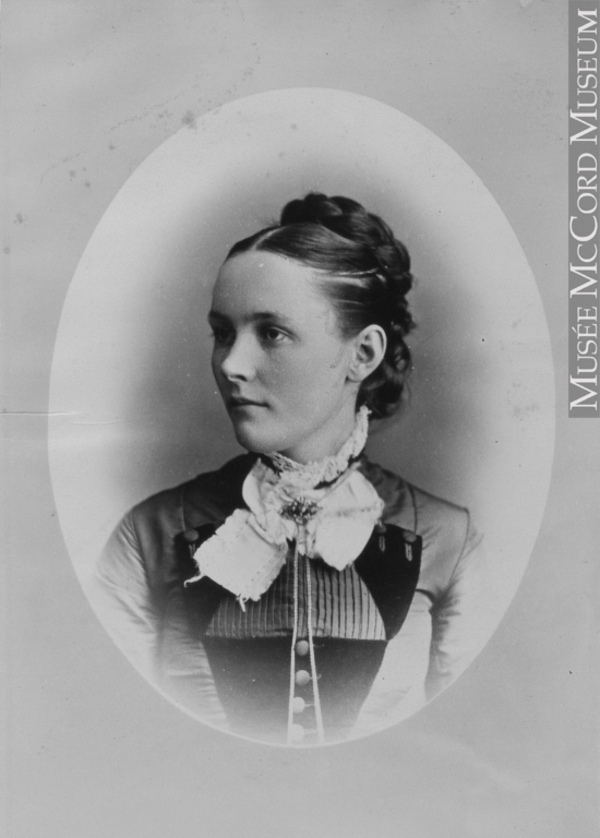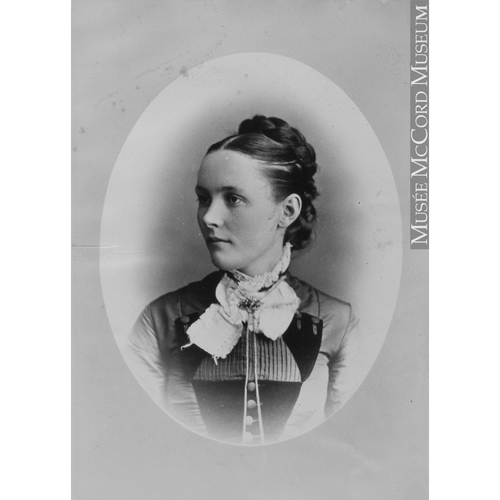
Source: Link
MUNRO, JESSIE KNOX, schoolteacher and missionary; b. 9 Jan. 1861 in Peterborough, Upper Canada, daughter of George Munro, a miller, and Jessie Shearer; d. unmarried 23 March 1923 in Peterborough, Ont.
Jessie K. Munro was raised in a devout Wesleyan Methodist home by stern but loving parents. At age 14 she dedicated her life to Christ during a revival at her church, George Street Methodist in Peterborough. This conversion experience planted a strong desire to devote herself to the service of the Gospel as a missionary. Opposition from her parents prevented Munro from pursuing her vocation immediately. Instead she began to teach at a nearby country school. She subsequently attended the Normal School in Ottawa and in 1882 received her second-class professional certificate. During her teacher training Munro had demonstrated a great capacity for languages and had become fluent in German.
Munro taught in Lakefield, Goderich, and Brighton, but her aspirations to seek a missionary career persisted, and she “covenanted with the Lord” to go to Japan “if He called and opened the way.” Shortly thereafter Munro saw an advertisement in the Christian Guardian (Toronto) placed by the Woman’s Missionary Society seeking a teacher for its school for girls, the Tōyō Eiwa Jo Gakkō in Tokyo, where the Methodist Church had been working since 1873 [see George Cochran*]. Seeing the advertisement as a sign, Munro immediately applied for the position. Impressed by her credentials and language skills, the missionary society accepted her. She arrived in Japan in the fall of 1888 and enthusiastically began teaching English, the Bible, and western morals to her Japanese students. Munro remained at the school until 1899 when ill health forced her to return to Canada.
In 1904 Munro appealed to the WMS to return to the mission field. That year the society sent her and nurse Retta Edmunds (Edmonds) to Pakan (Alta). The recent settlement of large numbers of Ukrainians in this area had raised concerns particularly among the Methodist and Presbyterian churches that they be Protestantized and assimilated. The Methodists launched their effort (ultimately unsuccessful in winning converts) in 1901, when they sent the medical missionary Charles H. Lawford to Pakan. The task of Munro and Edmunds was to establish a mission to the women and children.
For several months Munro and Edmunds lived in a tent where they conducted Sunday school classes while supervising the construction of the mission station at Wahstao. With the completion of the mission house, they opened a day school for immigrant children, a dispensary, and a clinic and began to offer instruction to Ukrainian women in child care and the domestic arts accompanied by Bible study. Their purpose was to instil the manners and morals of the Protestant Anglo-Canadian home. Ill health again forced Munro to go on furlough two years later. In 1908 she was instrumental in establishing the Home for Ruthenian Girls in Edmonton. Concerned about the plight of young immigrant women who had left their families to find work in the city, Munro hoped the home would provide a moral haven and an uplifting alternative to the “cheap picture shows, low theatres, public dance halls, restaurants of ill-repute” and above all the “Socialistic meetings” where “ignorant men speak against all religions.” Poor health forced Munro to retire permanently from mission work in 1909. Thereafter she lived with relatives in Toronto, Lakefield, and finally Peterborough, where she died in 1923.
In many respects Jessie K. Munro was typical of the hundreds of single, well-educated, middle class, and small-town women who pursued careers as missionaries in late 19th and early 20th century Canada. Mission work offered Munro an appealing alternative to the austere and authoritarian home in which she had been raised and enabled her to fulfil the Christian sense of duty implanted by her upbringing. Her career reflected the evangelical imperative to win lost souls for Christ, the ethnocentric desire to “civilize” alien peoples, and the humanitarian concern with the social problems afflicting the disadvantaged that combined at the time to produce a strong missionary impulse within English Canadian Protestantism.
AO, RG 80-8-0-935, no.28269. PAA, UCC, Alberta and Northwest Conference Arch., 75.387, box 12, item 423 (photograph of Munro); Methodist Church (Canada), Woman’s Missionary Soc., Alberta branch, minutes of the annual conference, 1904–9. UCC-C, Biog. file; Fonds 15, 78.080C, box 002, 1888, 1904–9; box 007, 1888–99. Examiner (Peterborough, Ont.), 24, 26 March 1923. Ethelwyn Chace, Wahstao memories: letters to Edith Weekes from Ethelwyn Chace recalling pioneer days, ed. Mrs J. K. Smith (privately published, n.p., n.d.). G. N. Emery, “Methodist missions among the Ukrainians,” Alberta Hist. Rev. (Calgary), 19 (1971), no.2: 8–19. R. R. Gagan, A sensitive independence: Canadian Methodist women missionaries in Canada and the Orient, 1881–1925 (Montreal and Kingston, Ont., 1992). Mae Laycock, Bridges of friendship (n.p., 1974; copy in UCC-C). Missionary Outlook (Toronto), September, December 1904; June 1905; May 1906; July 1909; January 1910. H. L. Platt et al., The story of the years: a history of the Woman’s Missionary Society of the Methodist Church of Canada (3v., [Toronto], 1908–17). C. I. Rauser, “Clean hearts and clean homes: the work of Methodist women missionaries among Ukrainian immigrants in east-central Alberta, 1904–1925” (ma thesis, Carleton Univ., Ottawa, 1991). Mrs W. E. [Elizabeth] Ross, Miss Jessie K. Munro (Toronto, [1923]; copy in Munro’s biog. file at UCC-C).
Cite This Article
Norman Knowles, “MUNRO, JESSIE KNOX,” in Dictionary of Canadian Biography, vol. 15, University of Toronto/Université Laval, 2003–, accessed January 20, 2025, https://www.biographi.ca/en/bio/munro_jessie_knox_15E.html.
The citation above shows the format for footnotes and endnotes according to the Chicago manual of style (16th edition). Information to be used in other citation formats:
| Permalink: | https://www.biographi.ca/en/bio/munro_jessie_knox_15E.html |
| Author of Article: | Norman Knowles |
| Title of Article: | MUNRO, JESSIE KNOX |
| Publication Name: | Dictionary of Canadian Biography, vol. 15 |
| Publisher: | University of Toronto/Université Laval |
| Year of revision: | 2005 |
| Access Date: | January 20, 2025 |



